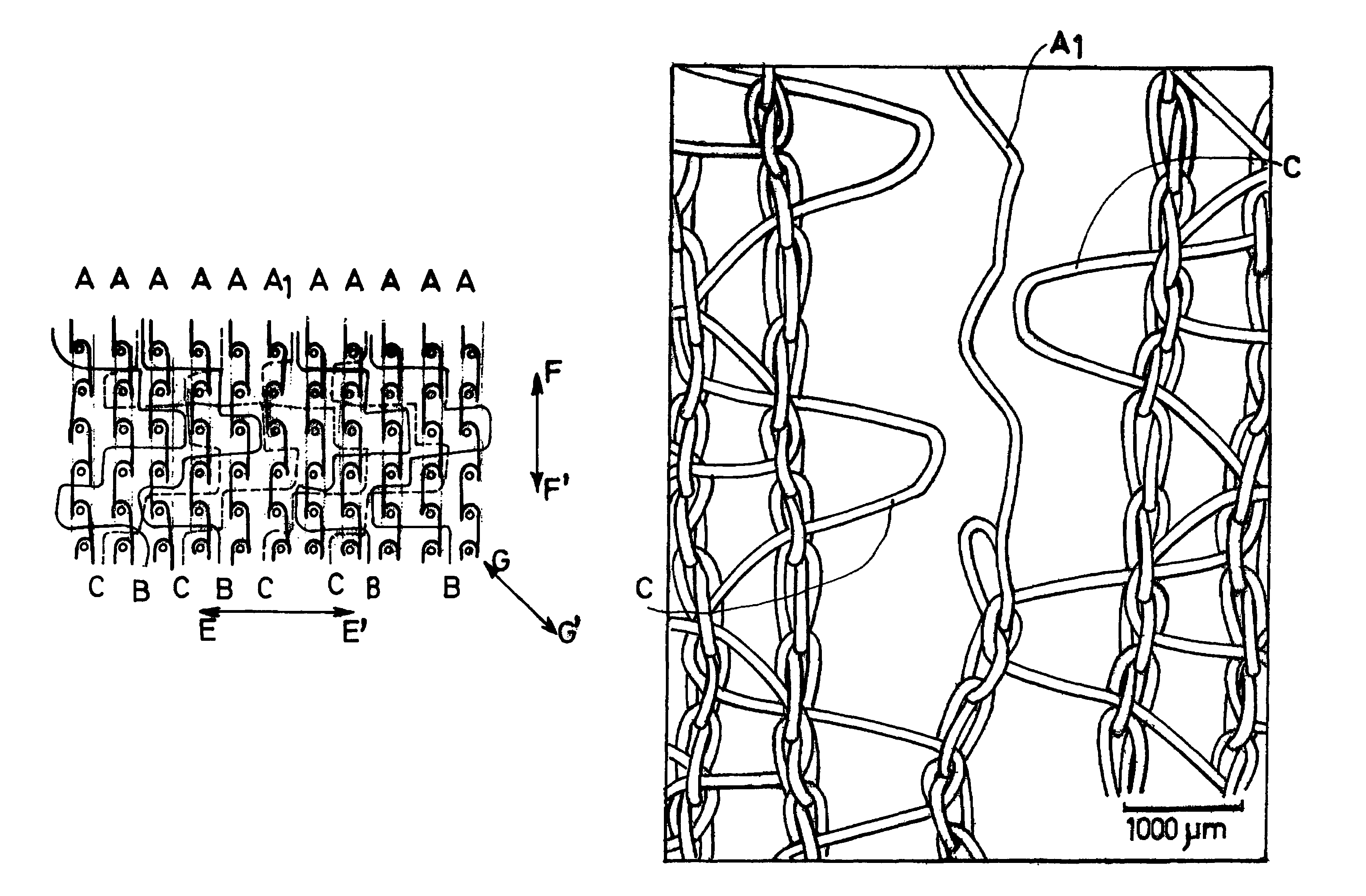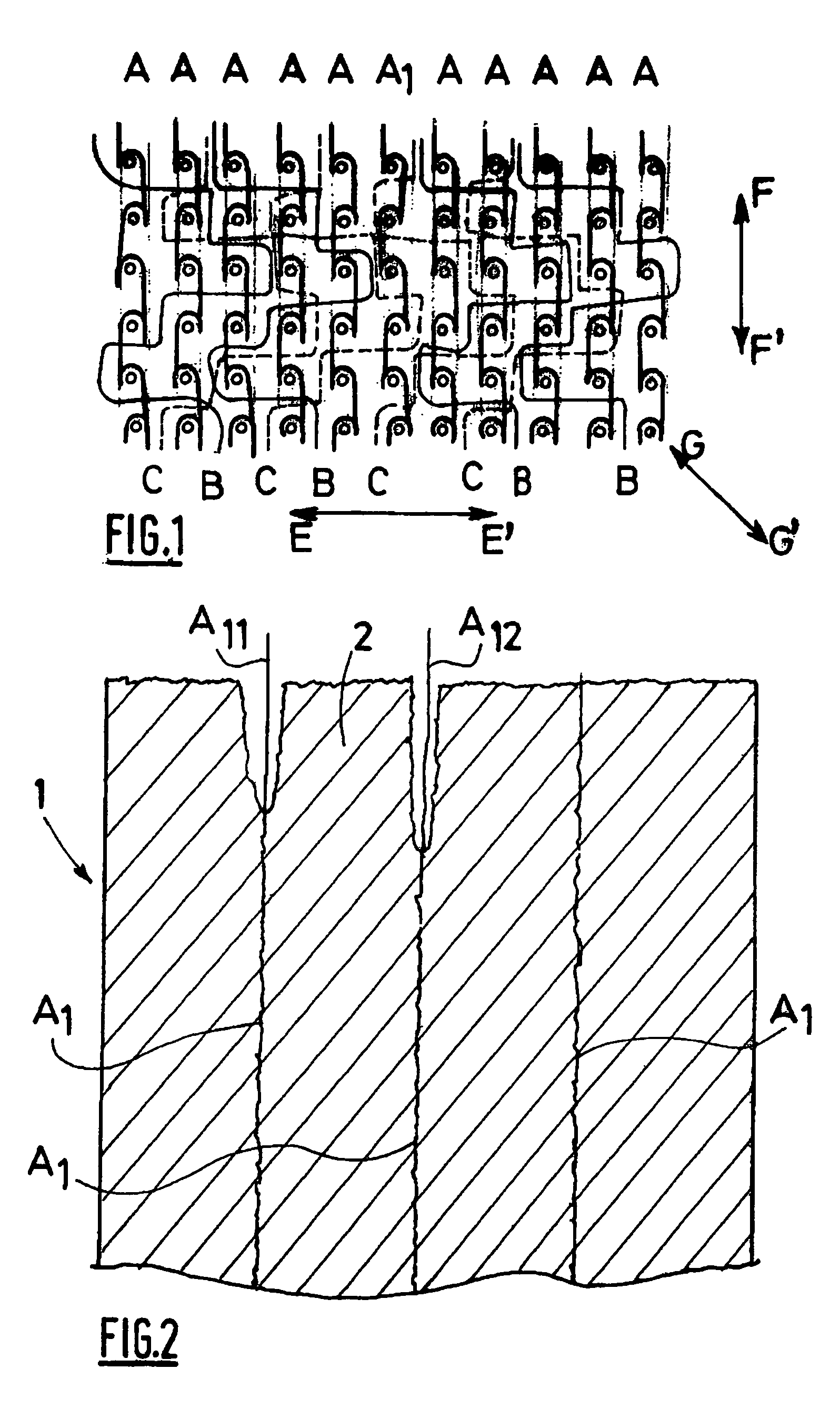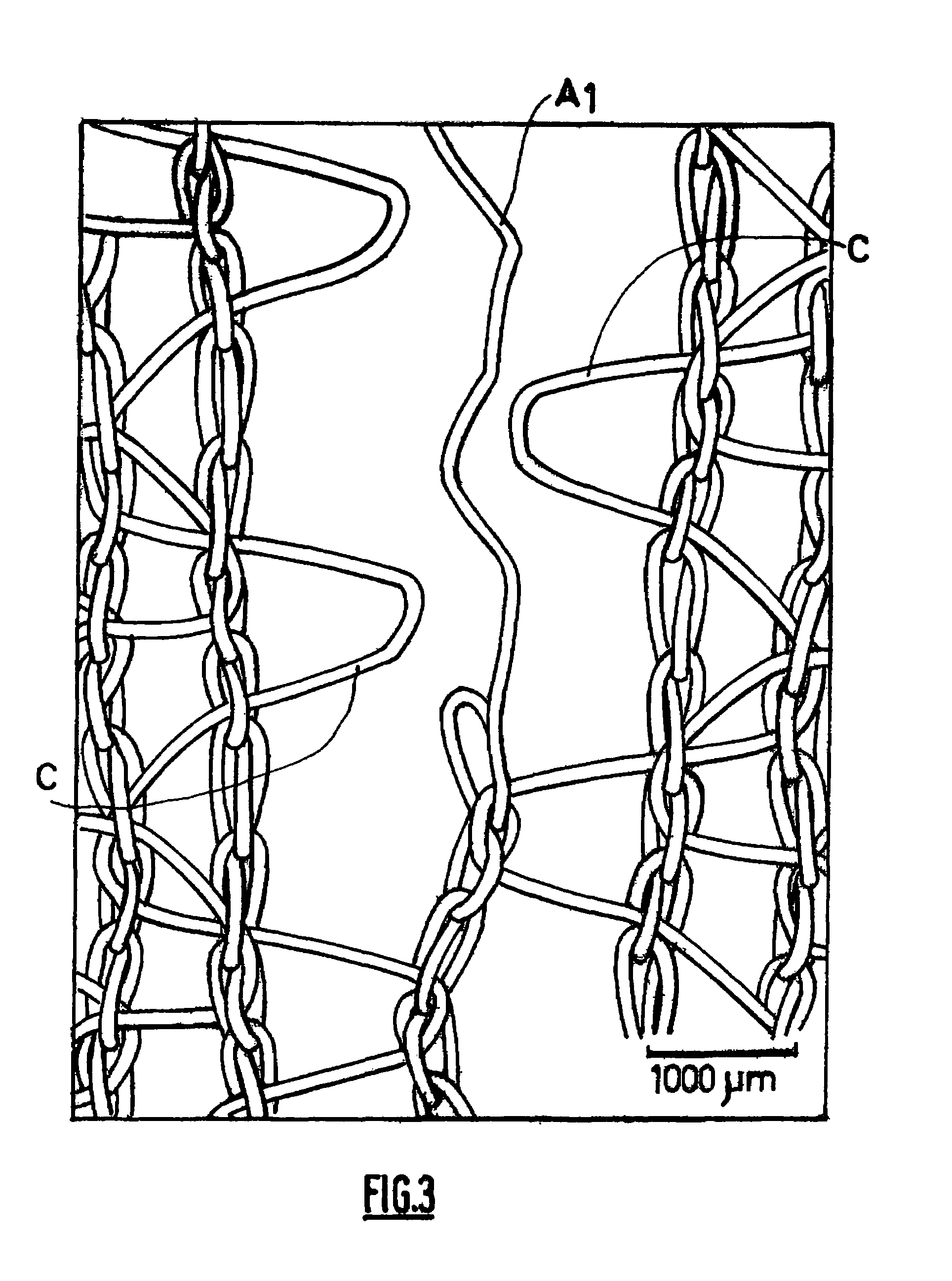Disassemble covering
a technology of disassembly and covering, applied in knitting, ornamental textile articles, textiles and paper, etc., can solve the problems of limiting as far as possible the release of particles, affecting the quality of the finished product, so as to achieve easy separation and avoid the risk of fraying
- Summary
- Abstract
- Description
- Claims
- Application Information
AI Technical Summary
Benefits of technology
Problems solved by technology
Method used
Image
Examples
example
[0081]A knit according to the invention was produced from a monofilament yarn of polypropylene, diameter 0.10 mm, on a Raschel machine, with a chain sheet and two non-meshing sheets, the following charts being used for the various sheets:[0082]the chain sheet: 1-0 / 0-1 / / ,[0083]the first non-meshing sheet: 1-1 / 3-3 / 2-2 / 0-0 / / ,[0084]the second non-meshing sheet: 3-3 / 2-2 / 0-0 / 1-1 / / .
[0085]The first guide bar, corresponding to the chain structure, was drawn continuously and full. The second guide bar, corresponding to the first non-meshing sheet, of partial weft, was drawn continuously and 1 full, 1 empty, 3 full, 1 empty, 1 full, 3 empty. The third guide bar, corresponding to the second non-meshing sheet, of partial weft, was drawn continuously and 1 full, 1 empty. The two partial wefts were drawn so as to move under nine chain yarns, by which means it was possible to finally obtain tapes separated by approximately 1 cm of width each. Therefore, in this example, 1 chain yarn in 10, that is ...
PUM
 Login to View More
Login to View More Abstract
Description
Claims
Application Information
 Login to View More
Login to View More - R&D
- Intellectual Property
- Life Sciences
- Materials
- Tech Scout
- Unparalleled Data Quality
- Higher Quality Content
- 60% Fewer Hallucinations
Browse by: Latest US Patents, China's latest patents, Technical Efficacy Thesaurus, Application Domain, Technology Topic, Popular Technical Reports.
© 2025 PatSnap. All rights reserved.Legal|Privacy policy|Modern Slavery Act Transparency Statement|Sitemap|About US| Contact US: help@patsnap.com



